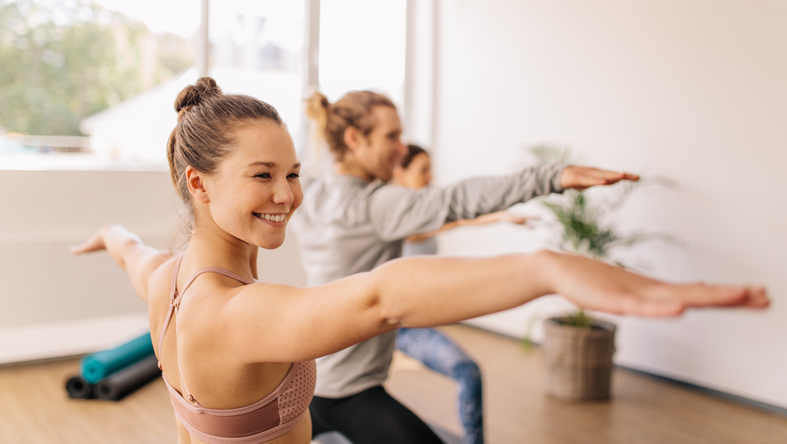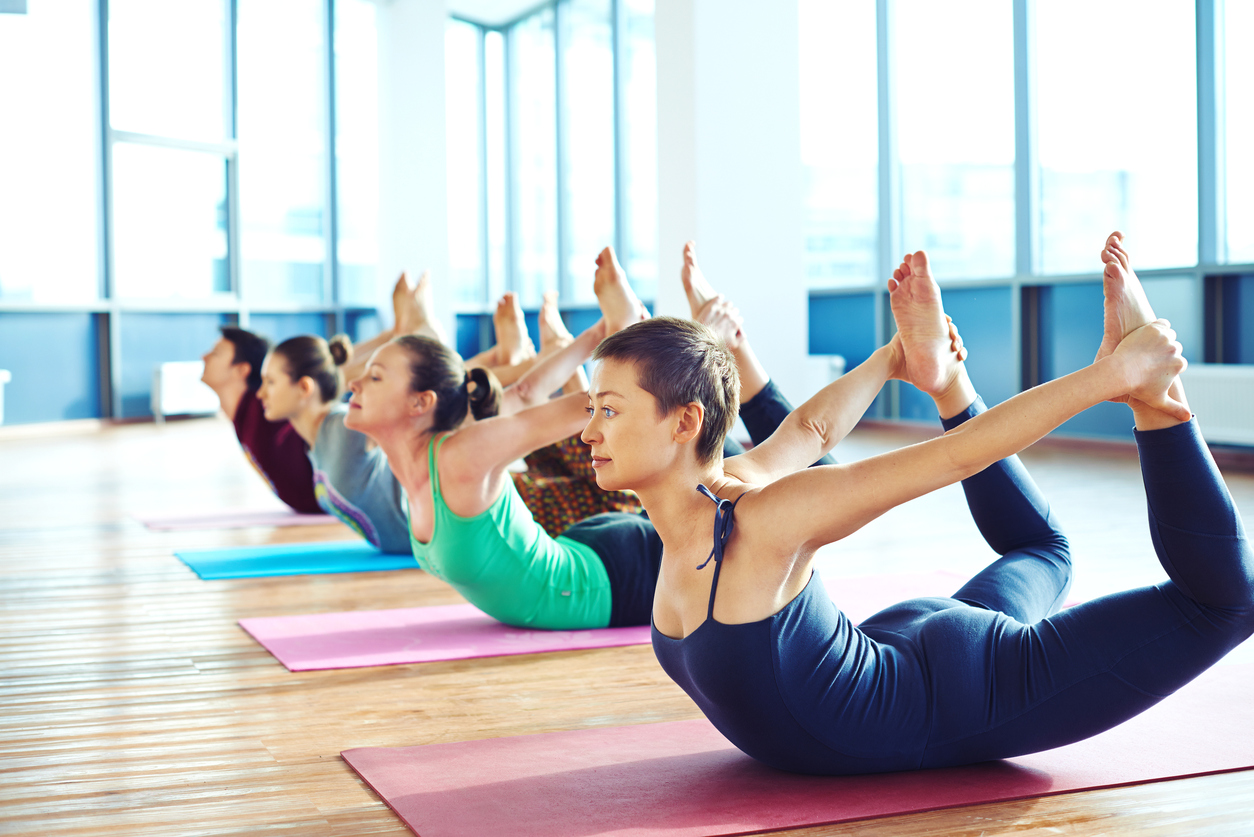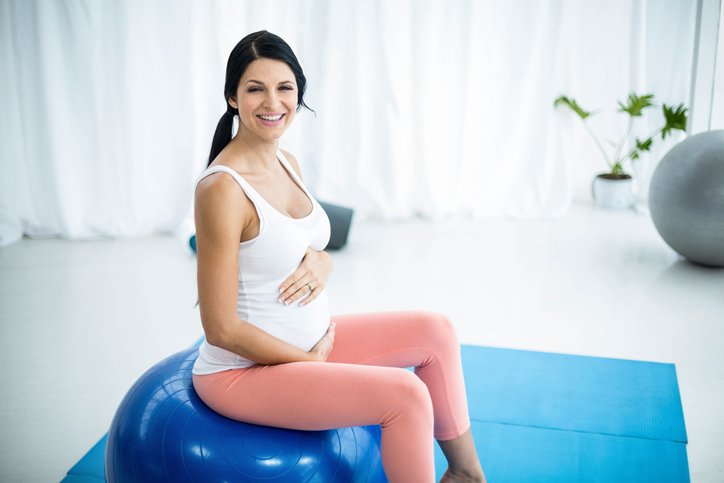Are you looking to start a yoga practice this year? Awesome! Yoga offers many benefits such as; increased flexibility, improved muscle tone, stress relief, cardio and circulatory health…and so much more. It’s a great way to bring wellness and balance into your busy life.
Ever looked at a yoga class schedule and been confused? What do all the different styles mean? Trust us, there’s a yoga style that’s right for everybody. We’ve broken it down so you can find the class that is perfect for you.
Anusara
Developed by American yogi John Friend, Anusara is designed to use the physical practice of yoga to help students open their hearts. It is meant to be accepting, so instead of trying to fit everyone into standard cookie-cutter positions, students are guided to express themselves in the poses to the fullest of their individual abilities. Classes explore Friend’s Universal Principles of Alignment, and are rigorous for body and mind.
Ashtanga
This is a rigorous style of yoga that follows a specific sequence of postures. There are six established sequences, and each is done in the same order with each movement linked to the breath. Ashtanga moves rapidly, flowing from pose to pose making for a sweaty, physically demanding practice.
Bikram
Developed by founder Bikram Choudhury, this style of yoga features poses in a sauna-like room. In Bikram yoga, the heat is cranked up to 105 degrees, so you’re gonna sweat as you work your way through a standard series of 26 poses – twice.
Hatha
This is a generic term that refers to any type of yoga that teaches physical postures. Hatha pretty much encompasses all types of modern yoga in the west.
If a class is described as “hatha” at a studio, it typically means you will get a gentle introduction to classical yoga breathing and postures. It’s not going to be a sweat-fest, but you’ll feel looser, stretched, and more relaxed. It’s a good place for beginners to start.
Iyengar
This is a purist yoga named for founder B.K.S. Iyengar. In Iyengar focus is placed on finding the proper alignment in a pose. Props like blocks, straps, harnesses, and incline boards are used to get you more perfectly into position. There isn’t a lot of fast flowing, so you won’t get your heart rate up… but you will be surprised at how physically and mentally challenging it is to stay in the poses.
We would never call this class ‘easy’. Iyengar instructors have comprehensive training in alignment, so if you are recovering from an injury or have chronic pain issues, this may be the class for you.

Jivamukti
A physical, limit-pushing practice that reintegrates yoga’s traditional spiritual elements in an educational way for Western practitioners. In Jivamukti, you can expect a theme for each class, Sanskrit chanting, and references to ancient scripture. If you want a challenging practice with a side of spirituality, this may be for you.
Kundalini
Kundalini yoga features constantly moving, invigorating poses. The flowing nature of the practice is intended to release the kundalini (serpent) energy in your body. You can think of it as an energy supply, coiled like a sleeping snake, at the base of your spine.
Kundalini aims to awaken this serpent and pulse the energy upward through your body. If you’re looking for a non-caffeinated way to jolt your energy, this may be the class for you.
Prenatal
Yoga postures carefully adapted for expectant mothers. Prenatal yoga is tailored to help women in all stages of pregnancy, even those getting back in shape post-birth. When you keep your muscles strong through your term, it can make for a smoother delivery and it will help them bounce back faster after the birth.
Restorative
This class is less about work, and more about relaxation. You use props such as bolsters, blankets and blocks to prop you into passive poses allowing the body to relax without effort.
We liken this class to a soothing nap for grown-ups (without actually sleeping). You’ll leave feeling rested and renewed. If you are majorly stressed out, this might be the class for you.
Vinyasa (Power)
An active and athletic style of yoga. Vinyasa yoga (sometimes called ‘power’ or ‘flow’) is a westernized ashtanga practice. But unlike ashtanga, vinyasa doesn’t stick to the same sequence of poses, classes vary week to week. These classes change depending on the instructor.
If you want to push yourself physically, and you get bored doing the same series week after week, this may be the class for you.
Yin
This is a quiet, meditative yoga practice, also called taoist yoga. Yin yoga focuses on lengthening connective tissues and is meant to complement yang yoga—your muscle-forming Anusara, such as ashtanga, Iyengar, or vinyasa. Yin poses are passive, you relax muscles and let gravity do the work. And they’re held for a long time. You’ll not only build flexibility, you’ll also build patience.
Ready to start your yoga practice? Grab a yoga mat, and head to your nearest studio!












